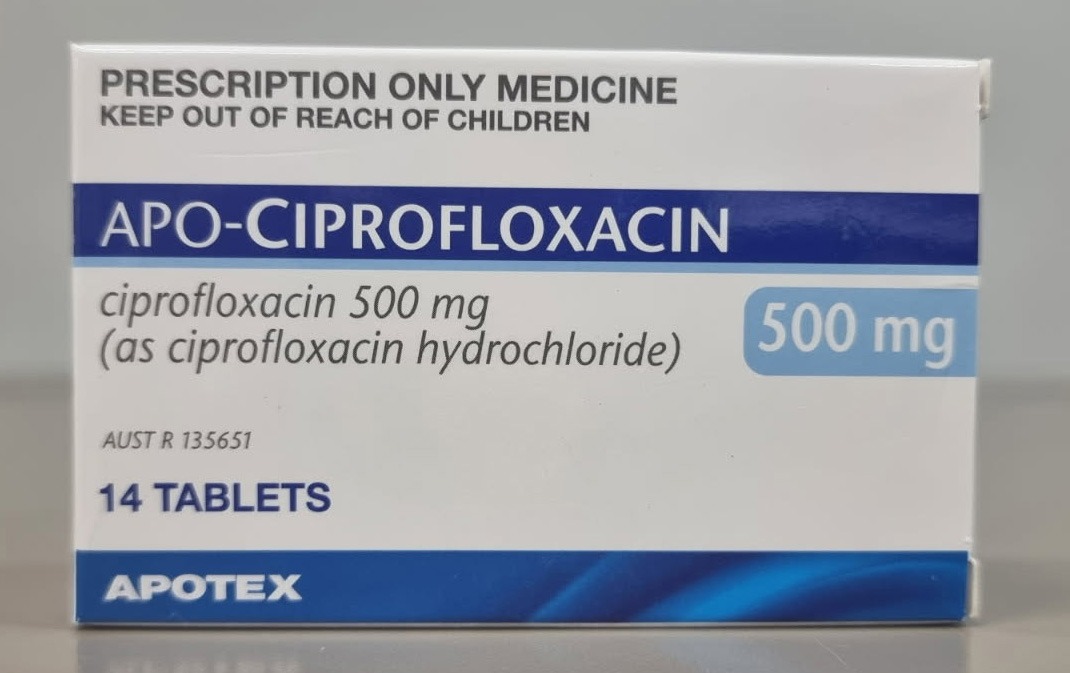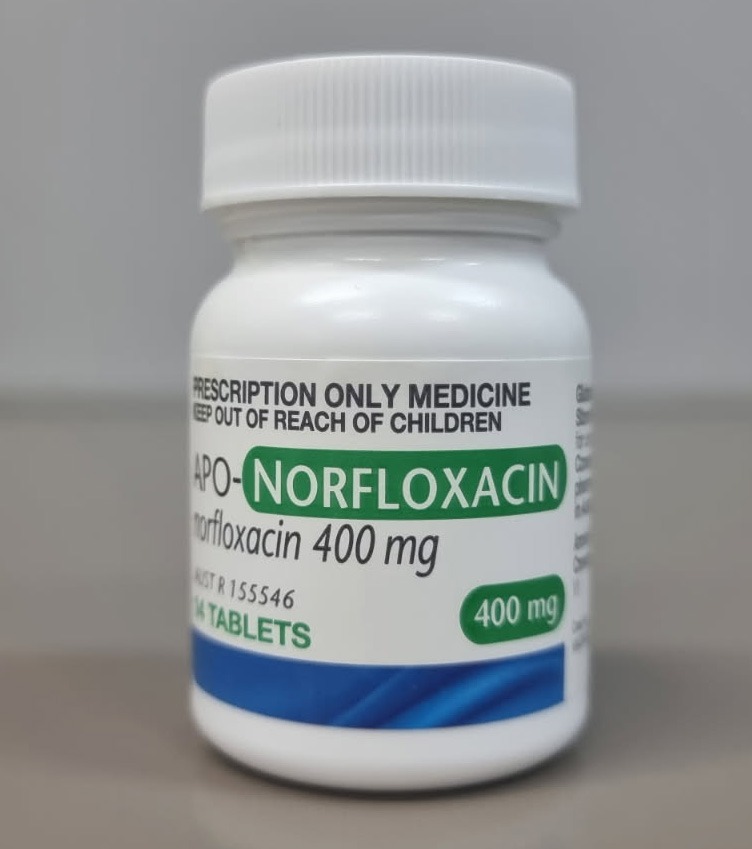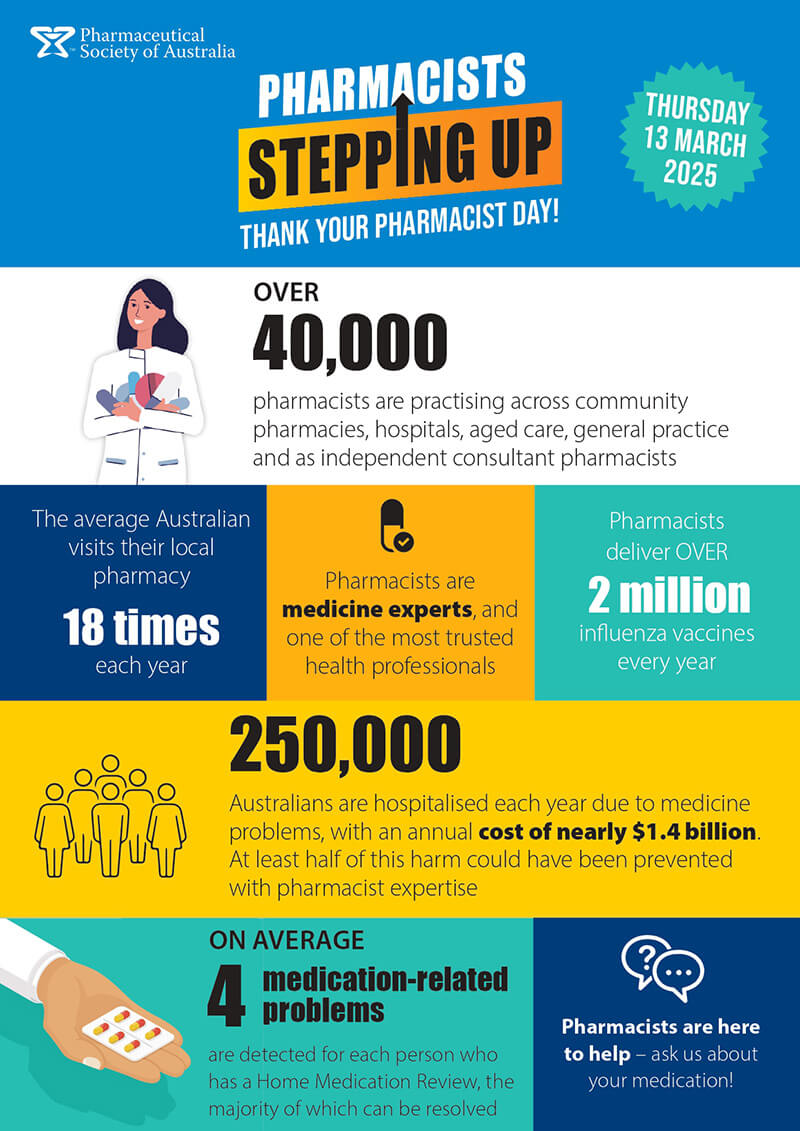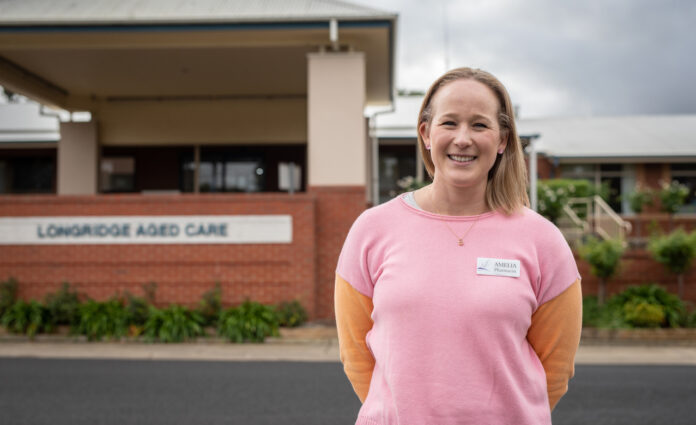Working in aged care allows Amelia Wood MPS to improve prescribing practices while working flexibly for her childcare needs.
What led you to pharmacy?
Winemaking was my first career, taking me from my hometown of Adelaide to Coonawarra in South Australia’s rural south east. After 5 years, I switched wine for healthcare. I was always interested in pharmacy, so I found an external course through the University of New England and got a job as a pharmacy assistant in nearby Naracoorte.
How did you end up in aged care?
After a couple of years in community pharmacy and two stints of maternity leave, I became accredited. When I started providing medication reviews, I knew that was what I wanted to do. I prefer the pace and I enjoy improving patients’ quality of life by optimising their medicines. In 2019, when a funded opportunity at Longridge Aged Care came up through a project coordinated by PSA and the
Country SA Primary Health Network, I jumped at the chance. When the project ended, Longridge offered to keep me on.
What attracted you to the sector?
As a community pharmacist, I had a good relationship with Longridge. But I was frustrated that I couldn’t do more. I would see medicines that could be changed, but it was difficult to coordinate with the doctors. Now I have the chance to carefully review them and be on hand to answer any questions. Aged care is also really flexible. I work at Longridge 2 days a week, leaving me time to fit in medication reviews around school and childcare.
Why are aged care pharmacists an asset in residential facilities?
I take a lot of stress off the nurses so they can focus on patient care, while ensuring doctors are accountable for prescribing. They know what prescribing practices will be an issue and often consult me before making any medicine changes. Since I’ve been at Longridge, there have been less adverse incidents and decreased use of antipsychotics, benzodiazepines, antibiotics and high-dose PPIs.
What’s a positive improvement in a patient that stands out to you?
When I first started, one of the patients was hospitalised with hyperkalaemia. She also had a lot of ongoing mental health issues and was on a high sedative load. I worked with the doctor and the mental health nurse to simplify her medicines, taking her off sedatives like tramadol, amitriptyline, and pregabalin. When she got back to the facility, I was able to provide continuum of care. At 2 weeks post-discharge she was still feeling flat, so we reintroduced one of her antidepressants. After that, we were able to improve her pain management by working with the physiotherapist and temporarily introducing Palexia. When she saw the doctor a few weeks later, he said it was the best she had been in a long time.
What is your best advice for up and coming ECPs?
If you’re interested in aged care, accreditation is a great first step. It’s also important to get out there and let people know what pharmacists can do. I know some facilities were initially unsure of the benefits, but once they had a pharmacist on the team they couldn’t be without them.
A typical day for Amelia Wood MPS, Embedded Pharmacist, Longridge Aged Care, Naracoorte SA
|
8.45am
|
School and day care drop off. My son’s school is across the road from the aged care facility, so it saves a lot of fuss in the mornings.
|
|
9.30am.
|
Question time. The morning is spent fielding queries from GPs, nurses and carers. I also liaise with community pharmacies to iron out discrepancies with medication charts or DAAs. Recently, we workshopped a way to make Schedule 4 medicines more distinguishable on sign-in sheets to ensure registered nurses (RNs) are contacted correctly.
|
|
10am
|
Psychotropic evaluations. Agitation and aggressive behaviour is often transient, so regular review of these medicines is necessary. This week, regular oxazepam was discontinued for one resident, and quetiapine for another – with no further issues.
|
|
1.30pm
|
Meeting of the minds. I catch up with the physiotherapists and RNs to look at whether falls are mechanical or chemical in nature, and discuss how they can be prevented.
|
|
2pm
|
Deep dive. I use this time to delve into medication charts to see if there are changes that need to be made. I do regular reviews and keep a list for the GP’s next monthly visit so nothing is missed. Recently, I reviewed a resident’s estimated glomerular filtration rate after his metformin was increased to 2 g daily. I advised the GP that his creatinine clearance is too low for this dose.
|
|
5.30pm
|
Home time. Cook dinner, help with homework and watch an episode of the latest series. I have decided to do my Diabetes Education Accreditation, so I will squeeze in a bit of study if I can!
|
FURTHER RESOURCES
Want to find out more about different career pathways for pharmacists?
Visit psa.org.au/careerpathways










 This article was sponsored and developed in collaboration with PSA and Carers NSW[/caption]
However, pharmacists may perceive medication errors or non-adherence as a carer’s inability to fulfil this role,
This article was sponsored and developed in collaboration with PSA and Carers NSW[/caption]
However, pharmacists may perceive medication errors or non-adherence as a carer’s inability to fulfil this role,







